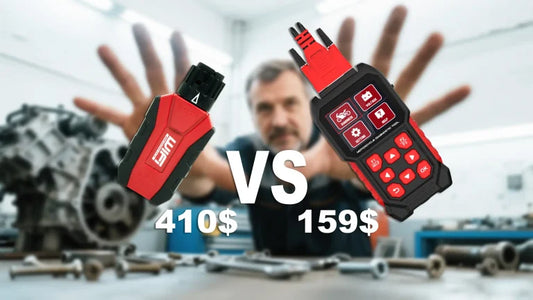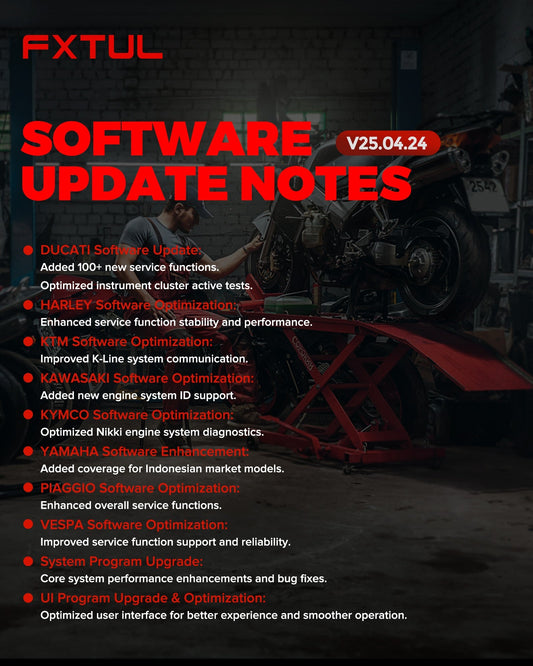I. Quick troubleshooting for four major core system failures
1. Intake system
◦ Air leakage: Check the intake manifold, vacuum hose, and air filter box seal (spray cleaning agent and listen for changes in speed).
◦ Throttle carbon buildup: Touch the edge of the throttle with your finger; if it feels grainy, clean it.
◦ Clogged air filter: Remove the air filter and observe it in the light; if the light transmission is less than 60%, replace it.
2. Fuel system
◦ Fuel line blockage:
▪ Carburetor vehicles: Loosen the float chamber drain screw; intermittent fuel flow = fuel tank switch filter screen blockage.
▪ Fuel-injected vehicles: Fuel pressure < 2.8 bar = fuel pump/filter element failure.
◦ Fuel injector malfunction: Gently tap the fuel injector body while the engine is warm; if the idle speed changes, there is internal sticking.
3. Ignition system
◦ Spark plugs:
▪ Electrode gap out of tolerance (standard 0.7-0.9 mm)
▪ Ceramic body cracks/side electrode melt pits → Must be replaced
◦ High-voltage coil:
▪ Cold engine idles normally, but stalls after warming up = high-voltage coil thermal degradation
▪ Secondary coil resistance > 15kΩ indicates failure.
4. Control System
◦ Idle Motor: After warming up the engine, unplug and then plug back in. If there is no speed fluctuation, the motor is stuck.
◦ Sensor Deception:
▪ If the oxygen sensor voltage remains below 0.3V, the air-fuel mixture is too lean.
▪ If the throttle position sensor idle voltage is not between 0.5-0.7V, calibration is required.
II. 10-step ultimate troubleshooting process
▶ Stage 1: 5-minute quick initial assessment
1. Listen for abnormal noises:
◦ “Hissing” sound → vacuum leak
◦ “Popping” backfire → mixture too lean
2. Death Test:
◦ Instant engine shutdown when turning on headlights/honking the horn → Battery voltage < 12V
◦ Sudden drop in RPM when engaging the clutch → Idle compensation valve failure
3. Aggressive Testing (Carburetor Vehicles):
◦ Blocking 50% of the air filter intake opening → RPM increase = Lean fuel mixture
▶ Stage 2: In-depth inspection
4. Fuel system inspection:
◦ Carburetor:
▪ Float chamber fuel level > 2/3 of the sight glass = needle valve fuel leak
▪ Check the idle air hole with a 0.1 mm copper wire to see if light passes through
◦ Electronic fuel injection system:
▪ Fuel pressure test (Refer to the manual for standard values)
▪ Injector resistance: 11-16Ω (outside this range indicates damage)
5. Ignition System Inspection:
◦ Spark plug ground test: Blue spark = normal, red spark = insufficient energy
◦ High-voltage wire leakage detection: Observe arcing during nighttime ignition
6. Ghost Hunting:
◦ Crankshaft Position Sensor: Magnetic gap > 1mm → Lost hot engine signal
◦ Side Stand Switch: Short-circuit green/black wires to test for false triggering.
▶ Stage 3: Resurrection Ceremony
7. Carburetor First Aid:
◦ Reset the mixture ratio screw: tighten clockwise and then back off 1.5 turns.
◦ Polish the float needle valve: use 600-grit sandpaper to sand the cone surface vertically.
8. Fuel Injection Rebirth:
• Oxygen Sensor Bypass: Disconnect the connector to force open-loop control
• ECU Idle Learning: Warm up the engine, shut off for 30 seconds, then start without touching the throttle for 10 minutes.
III. Red line for maintenance safety
1. Three rules for fuel handling:
! Stay away from open flames + ventilate the garage + have a fire extinguisher ready
2. Taboos for electrical circuit operation:
! Do not unplug sensors while the power is on → risk of burning out the ECU
! Be sure to turn off the power when measuring resistance with a multimeter.
IV. Self-inspection checklist
1. Blow air into the fuel tank vent hole (there should be air flow).
2. Press the spark plug cap firmly into place (you should hear a “click” sound).
3. The vacuum tube should have no creases or cracks (when squeezed, it should bounce back in >1 second).
4. The ECU plug pins should not be bent (check each pin individually).
V. Preventive maintenance
• Every 500 km: Add PEA fuel cleaner
• Every quarter:
◦ Apply dielectric silicone grease (model: Dow Corning DC-4) to electrical connectors
◦ Carburetor vehicles: Loosen the float chamber screws to drain accumulated water
Final advice: After cleaning the throttle body/replacing the air filter, ECU idle learning must be performed! Otherwise, the fault light will remain on.




